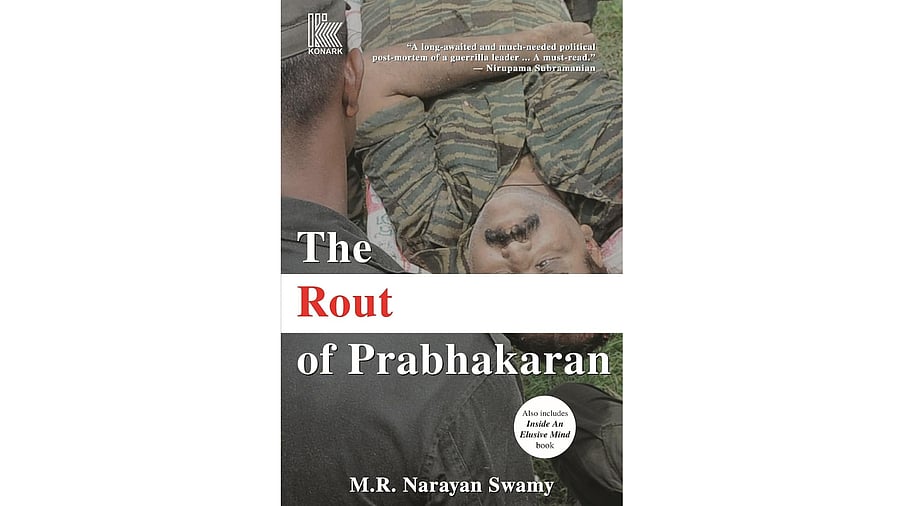
The Rout of Prabhakaran
Credit: Special Arrangement
No one has covered the Tamil Eelam war or the separatist movement quite like M R Narayan Swamy. A brilliant journalist and writer, Narayan Swamy has extensively chronicled the blood-soaked history of Sri Lanka for 35 years. It wouldn’t be an exaggeration to describe him as the final word on this subject.
His book The Rout Of Prabhakaran is just out. It comes exactly 15 years after the complete annihilation of the Liberation Tigers of Tamil Eelam (LTTE). It reads like a postmortem of the LTTE, once dubbed the world’s most dangerous terrorist organisation.
Many others have written on Sri Lanka’s civil war, but Narayan Swamy stands out due to his deep understanding and insight. He is objective and sympathetic to the cause, but unsparing when it comes to exposing the hypocrisy and demagoguery of the LTTE’s supreme leader Velupillai Prabhakaran.
Prabhakaran began fighting for the right cause but his methods were all wrong. Within a few years, he had turned into a Stalinist; a fascist leader who believed in totalitarian rule. He tolerated no dissent, listened to no one and unleashed a reign of terror on his own people.
The cunning and cruel Prabhakaran could randomly order anybody’s torture and death. His orders were always carried out without any questions. In the name of creating a Tamil homeland, he rendered millions of Tamils homeless. Thousands were killed. He had no qualms about snatching teenage boys and girls from their parents to fight a bloody war against an unequal enemy. He expelled innocent Muslims from the Jaffna peninsula and harassed the very diaspora that had generously funded his fight against the Sri Lankan military.
Prabhakaran’s diabolical nature was exposed to the world when he ordered the assassination of the well-meaning Indian prime minister Rajiv Gandhi, who had once given him his own bulletproof jacket. Prabhakaran was no recluse, but he was not easily accessible. People have written reams about him. But few capture his complex personality. Narayan Swamy’s book does that in a highly incisive and objective manner.
Narayan Swamy is full of sympathy for the Tamils and their cause. He stands by them. But he makes a clear distinction between the Tamils of Sri Lanka and Prabhakaran’s LTTE. It is no secret that the LTTE, which always claimed to fight for the democratic rights of Tamils, engineered the cold-blooded murder of hundreds of Tamil leaders who opposed its violent ideology. Some of the brightest Tamil minds were extinguished to satisfy Prabhakaran’s megalomania.
Prabhakaran was a hypocritical guerilla leader. He had banned LTTE cadres from marrying, having sex, caring for their families, drinking, smoking, and even watching films and television. But he fell in love, got married, had three children, doted on them, and ensured a luxurious life for them. He was right in opposing the majority Sinhalese rulers who had made the minority Tamils second-class citizens in their own homeland. He wanted them to live in an equal society, but he denied them that very right under his totalitarian rule. The self-obsessed leader comes alive in this terrific book.
After reading it, one concludes that even if Prabhakaran had achieved a separate nation for the Tamils, it would have just been another North Korea. It wouldn’t have been a prosperous, democratic nation, a dream he sold the Tamils for decades. Narayan Swamy has done a great service to history by writing this book on Prabhakaran and the Tamil Tigers.